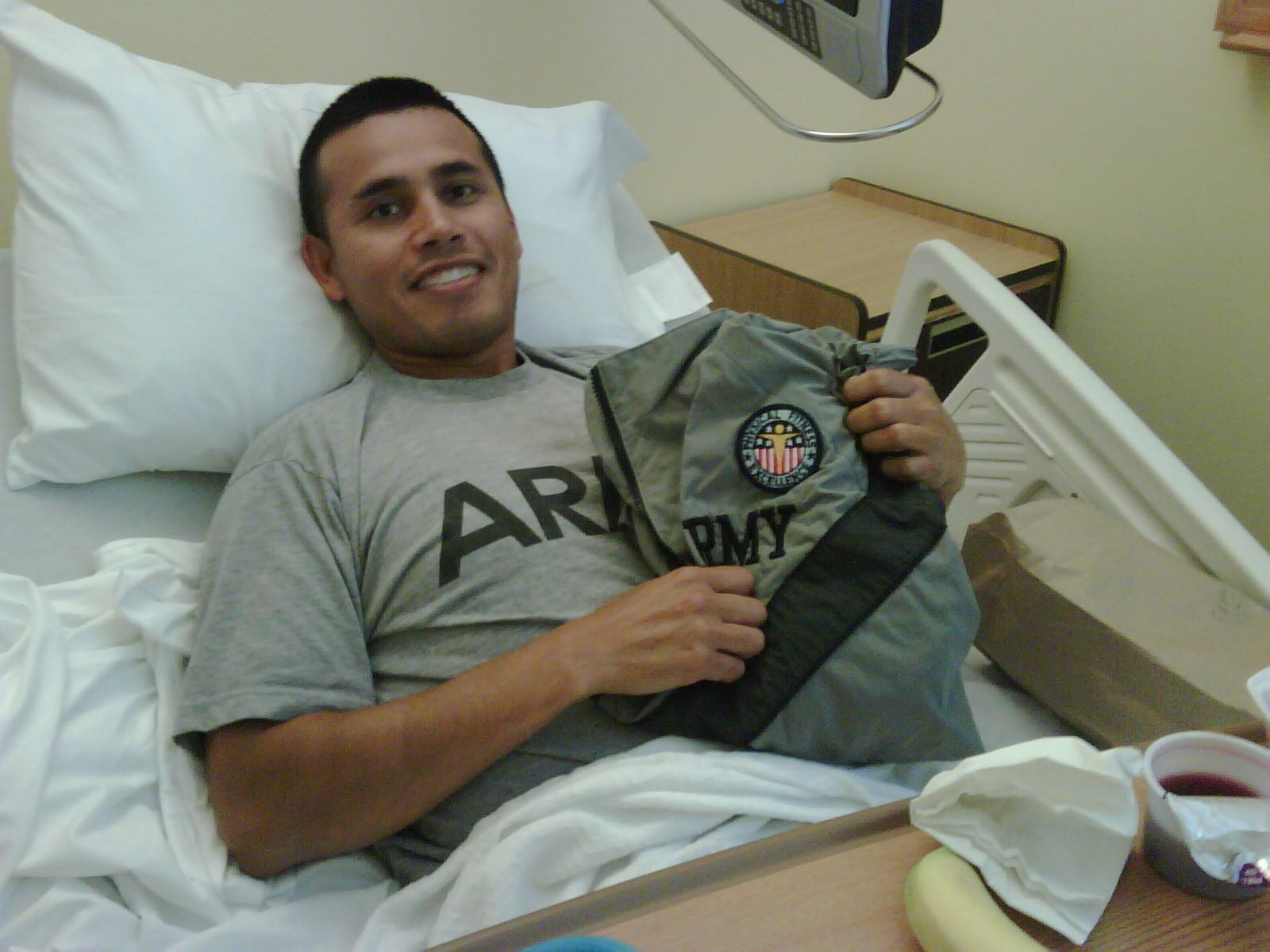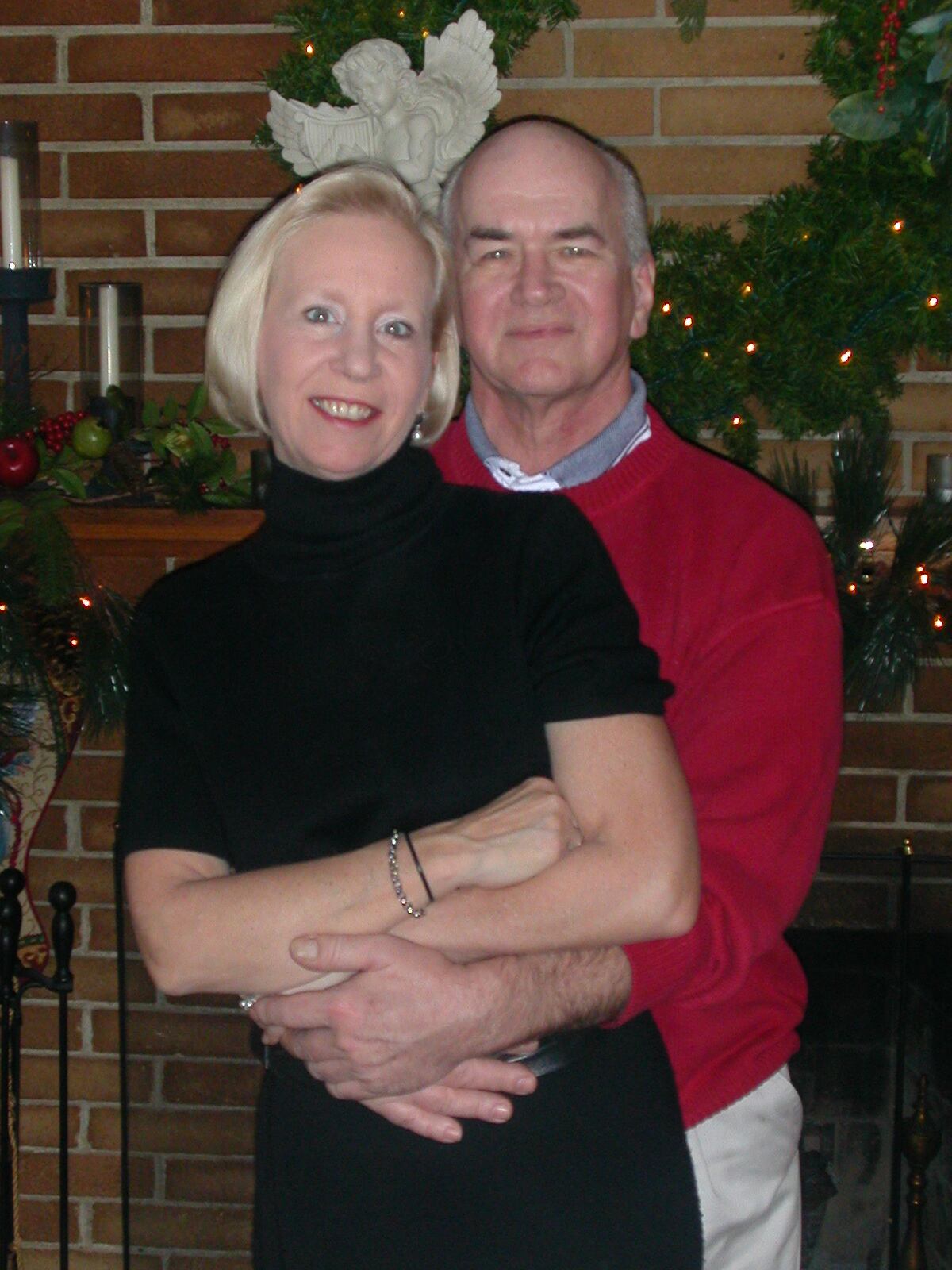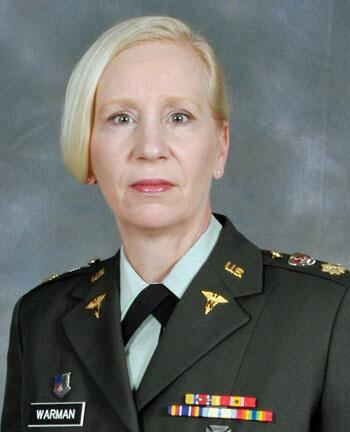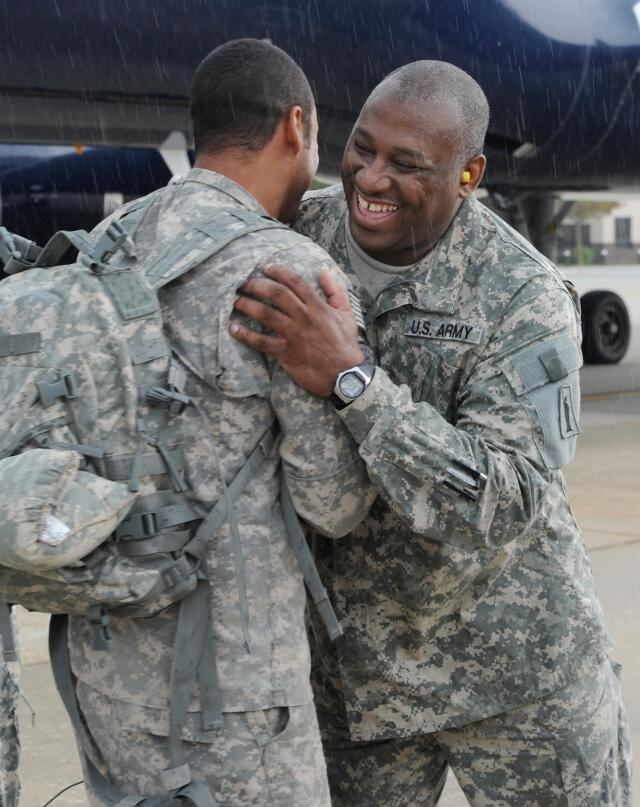On Friday, more than five years after a bullet shattered his right femur, Sgt. 1st Class Miguel Valdivia will receive the Purple Heart.
But Valdivia, who will be honored alongside 46 others who were killed or wounded in the deadly 2009 shooting rampage at Fort Hood, Texas, is conflicted.
"It feels good, but at the same time I'm feeling numb," said Valdivia, who was shot three times that day. "It's a guilty feeling. I only got wounded. Deep inside, I feel I don't deserve it."
Thirteen people were killed and more than 30 wounded in the Nov. 5, 2009, attack by former Maj. Nidal Hasan.
Hasan was convicted in August 2013 of 13 counts of premeditated murder and 32 counts of attempted murder and sentenced to death.

Sgt. 1st Class Miguel Valdivia during his recovery from wounds after the Fort Hood shooting.
Photo Credit: Courtesy Sgt. 1st Class Miguel Valdivia
The victims of the shooting, the deadliest on a U.S. military installation, will be honored during a ceremony at 9 a.m. Friday at the III Corps headquarters on Fort Hood.
As many as 47 Purple Hearts and Defense of Freedom Medals, the civilian equivalent of the Purple Heart, will be awarded Friday. The event is hosted by Lt. Gen. Sean MacFarland, commander of III Corps and Fort Hood.
The Purple Heart ceremony is years in the making, after a years-long battle by the victims and their families in the aftermath of the shooting. In early February, Army Secretary John McHugh announced the award after Congress mandated a change in the medals' eligibility criteria.
Congress redefined what should be considered an attack by a "foreign terrorist organization." The legislation states that an event should now be considered an attack by such an organization if the perpetrator "was in communication with the foreign terrorist organization before the attack," and "the attack was inspired or motivated by the foreign terrorist organization."
There was sufficient evidence to conclude Hasan "was in communication with the foreign terrorist organization before the attack," and that his radicalization and subsequent acts could reasonably be considered to have been "inspired or motivated by the foreign terrorist organization," the Army said.

Philip Warman shown with his wife, Lt. Col. Juanita Warman. Juanita Warman was the highest-ranking service member killed during the shooting at Fort Hood, Texas.
Photo Credit: Courtesy Philip Warman
Philip Warman, whose wife Lt. Col. Juanita Warman was the highest-ranking soldier killed in the shooting, said he is eager for the victims to receive the award.
"It gives me satisfaction that it's going to happen," he said. "Personally, my wife was an outstanding officer. She was thoroughly professional, she regarded her civilian life more as a temporary leave from full-time Army service."
Juanita Warman was a psychiatric nurse practitioner, and she had volunteered for a tour of duty in Iraq.
"She felt she could do more good by getting to those soldiers more quickly, while they were actually still in the service," Philip Warman said.
His wife, who had served in the Army Reserve for 24 years, had only just arrived at Fort Hood after training at Fort Hunter Liggett, California, when the shooting occurred, Philip Warman said.

Lt. Col. Juanita L. Warman, of Havre De Grace, Md., was killed during the 2009 Fort Hood shooting. She was assigned to the 1908th Medical Company, Independence, Mo.
Photo Credit: Army
"She was primed and ready to go," he said. "She certainly would have done well, but that was cut short at Fort Hood. I felt that just to shrug it off as some sort of unfortunate incident or a dispute with another soldier or something like that really didn't recognize the true nature of what she was going to do and what she, in fact, faced."
Philip Warman was at home in Havre de Grace, Maryland, when his mother-in-law called to tell him about the shooting. He wasn't too concerned at first, thinking his wife was still en route to Fort Hood from her other training.
"Then I turned on the TV and started watching," he said. "I called her, and I didn't get any answer on her cell phone, so I just assumed she might have been involved in treating casualties."
It wasn't until later that night that Philip Warman began to worry.
"It was after dark, I remember, and I started calling emergency numbers," he said.
At about 10 p.m., he heard a knock on his door.
"There were two officers in Class As, and I knew what that meant," he said.
Losing his wife was hard, Philip Warman said.
"It's hard to describe," he said.
But he has moved forward, he said.
"When your loved one is deployed, I think it's up to the people who are behind to make sure everything stays intact and goes along while they're doing their service," he said. "I think that's really what I had to do. You just have to keep going, otherwise you extend the grief longer, and that makes the tragedy worse."
His wife was strong, intelligent and determined, and she likely would have felt some satisfaction to be receiving the Purple Heart, Philip Warman said.
"She's an example of the finest that the nation has," he said.
Sgt. 1st Class Paul Martin was determined to stay in the Army Reserve after he was shot four times during Hasan's rampage.
Martin, a petroleum supply specialist who served 14 years in the active Army before switching to the Reserve, said he is excited about Friday's ceremony.
"It means a lot to me," he said. "I'm like a kid waiting for his Christmas present the day before Christmas. I feel it's an honor to be honored by my country that I love to serve and I fought for."

Staff Sgt. Paul Martin embraces a fellow soldier after a deployment. Martin was one of several soldiers wounded at the Fort Hood shooting Nov. 5, 2009.
Photo Credit: Carlos Cintron/Army
Martin, 50, was preparing to deploy to Iraq with the 716th Quartermaster Company from Jersey City, New Jersey, when he was shot.
The bullets struck Martin in both arms, his back and his left thigh.
One of his first goals after he was wounded was to return to duty, he said. His recovery took almost two years.
"My family standing behind me and religious faith, that was what helped me recover," Martin said.
Martin, who is now an Active Guard and Reserve soldier in the 141st Quartermaster Company of Tyler, Texas, said he initially struggled because his wounds prevented him from deploying with his soldiers.
"I was a leader and I couldn't be there for my soldiers," he said. "I struggled with leaving my soldiers hanging. That was hard. I felt I let them down."
But his soldiers' encouragement, counseling and faith helped him through, Martin said.
He even made it to the tarmac at Fort Dix, New Jersey, to welcome home his soldiers after their Iraq deployment.
"All I did was be a soldier and continue to soldier on and do my job to the best of my ability," he said.
For Valdivia, a behavioral health specialist assigned to the 330th Medical Brigade outside Chicago, his willingness to volunteer for a deployment is what brought him to Fort Hood that day.
Valdivia, who had previously served in Kuwait and Iraq, volunteered to deploy to Afghanistan with the 452nd Combat Stress Control from Madison, Wisconsin.
"I like being a soldier, and there was an opportunity for me to do something I like to do," he said. "It sounds silly, but I wanted to go to Afghanistan because I wanted to see the mountains."
On the day of the shooting, after some initial confusion and wrangling, Valdivia was able to get his records pulled for his pre-deployment medical checks.
"The lady said it was my lucky day," he said. "She had my records and she was going to print them. Then everything happened."
Valdivia was shot in his right leg and hip. A third bullet grazed his left ear.
He has endured several surgeries, including two that involved putting a rod in his right leg where the femur was shattered. His doctors initially told him he would never run again.
"I love running, so I'd go to the trails and I'd pretend to run," he said.
Valdivia finally worked up the ability to run for 10 seconds straight.
"The pain was very strong," he said. But he kept pushing, slowly increasing his running time to 12 seconds at a time, then 15 seconds at a time and so on.
Today, he can run up to two miles, maybe two and a half "if I'm lucky," he said.
"I just kept on going and going," he said. "Sometimes things don't go the way you want, but I'm still here."
Michelle Tan is the editor of Army Times and Air Force Times. She has covered the military for Military Times since 2005, and has embedded with U.S. troops in Iraq, Afghanistan, Kuwait, Haiti, Gabon and the Horn of Africa.





